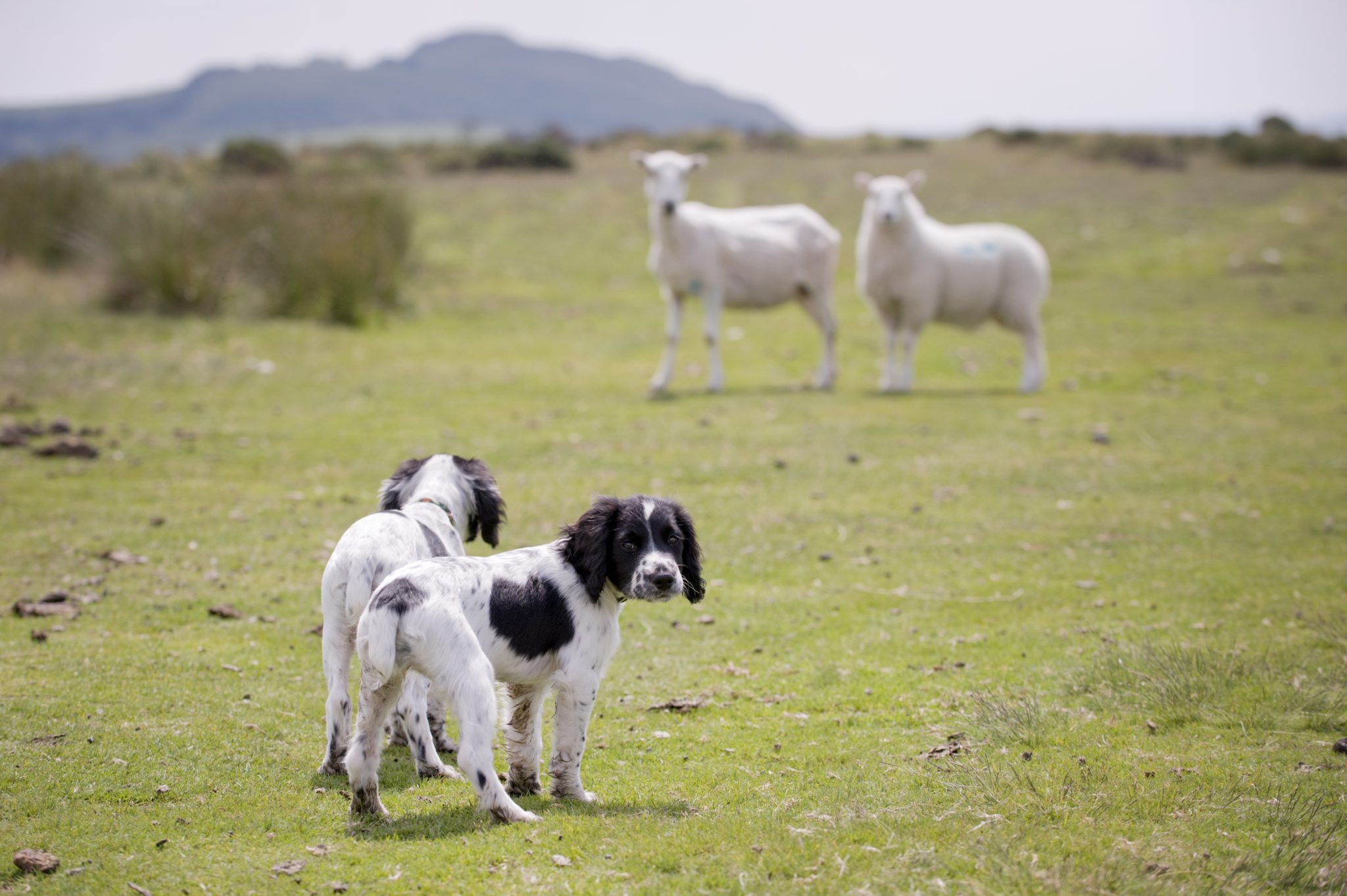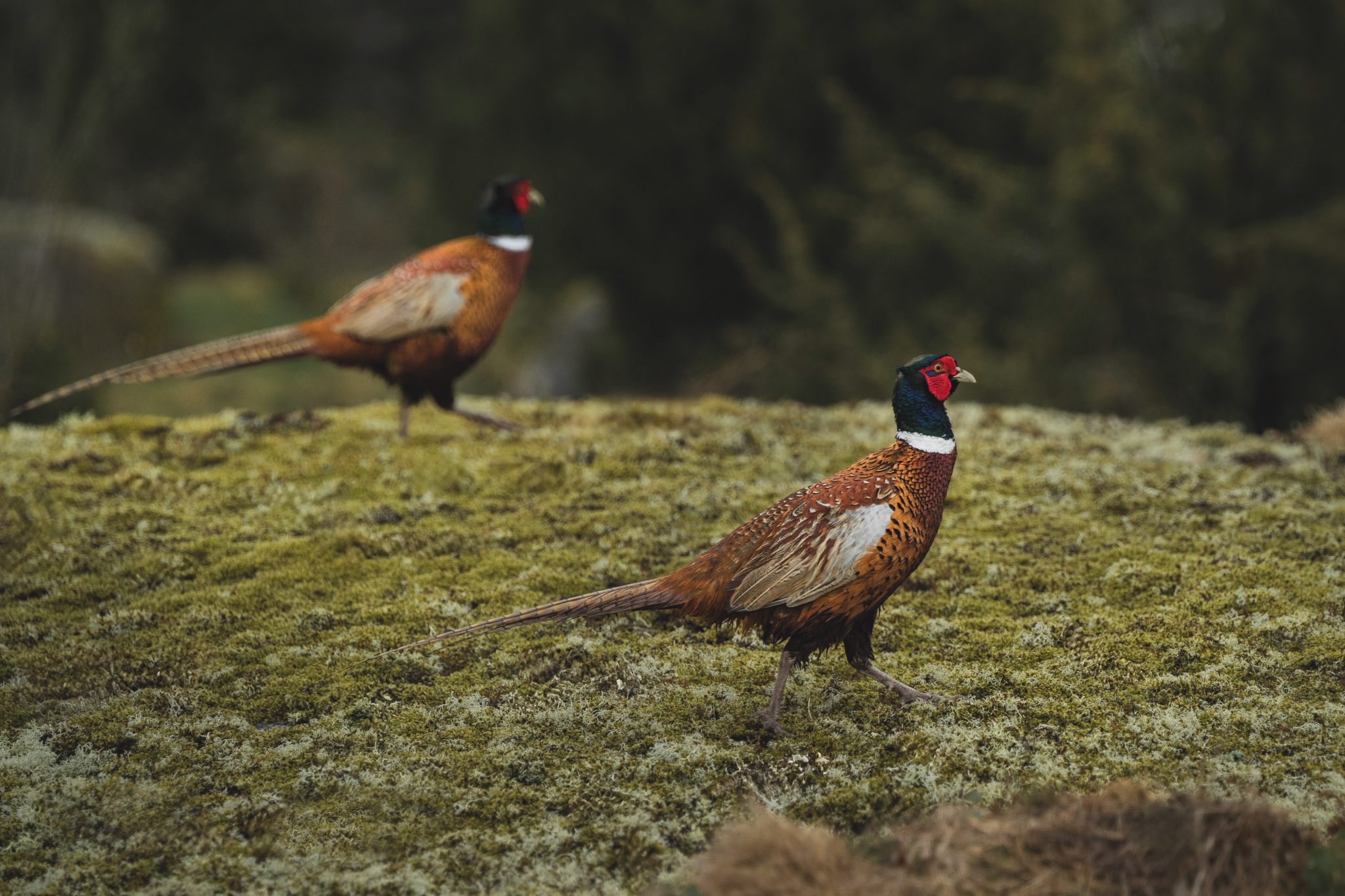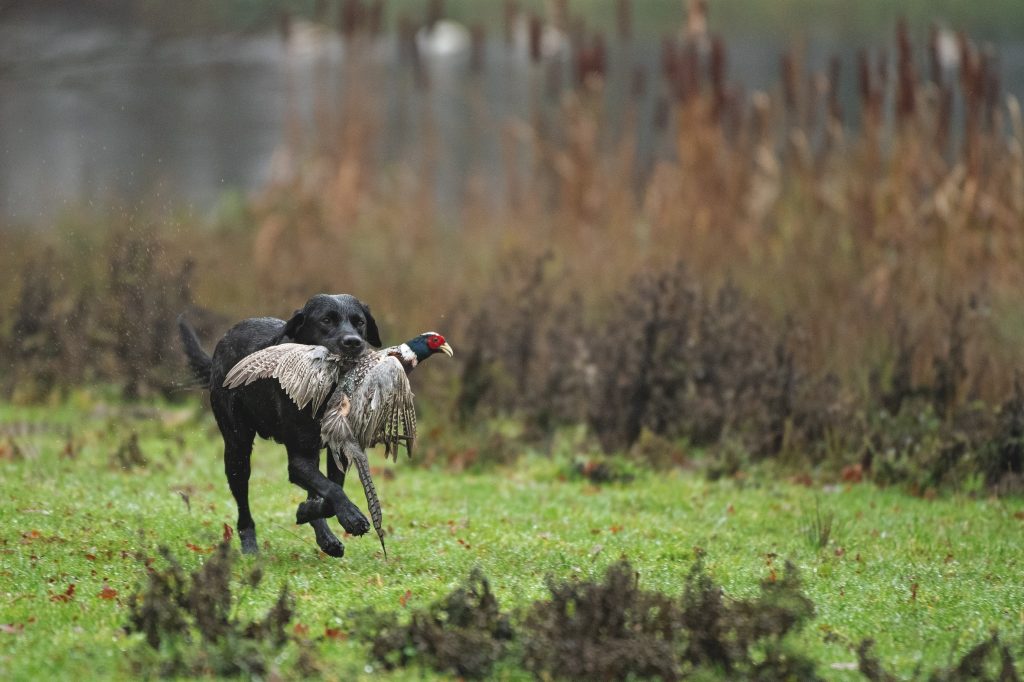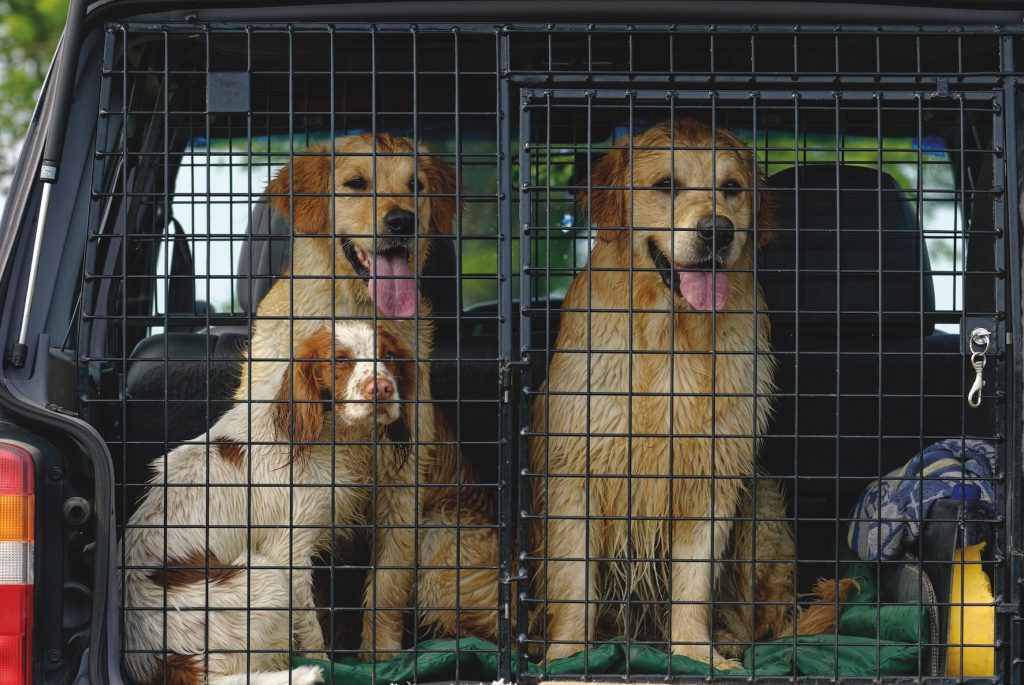Win CENS ProFlex DX5 earplugs worth £1,149 – enter here
How to stop a dog chasing sheep and livestock
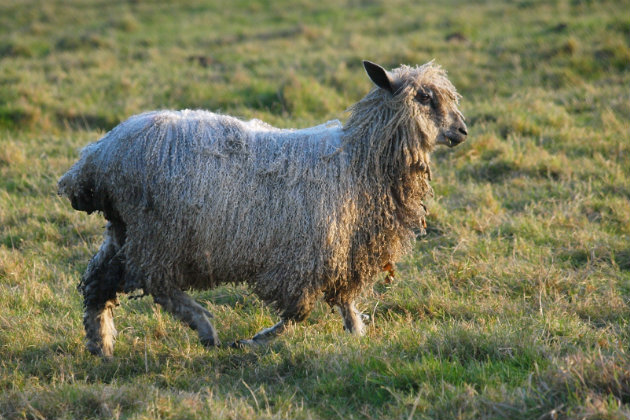
The costs of a dog chasing sheep
According to Sheep Watch UK about 15,000 sheep are killed each year by dogs, when dogs are off the lead in a field with sheep or other livestock. This figure only includes the reported attacks, so numbers are likely to be more. Owners of working dogs are honour bound to make sure their gundogs behave well around livestock – it’s all part of being a responsible Gun. (Read how to use a slip lead correctly.)
A dog chasing sheep, resulting in death or miscarriage, is devastating for the farmer who lose valuable livestock and future income. In 2018 NFU Mutual put the cost of livestock worrying at £1.2 million.
The Dog (Protection of Livestock) Act 1953 says a person can be found guilty of ‘worrying’ without their dog actually having any physical contact with the sheep. Under the Act, the owner of the dog, or anyone in charge of the dog, that person also, shall be guilty of an offence if a dog is at large (that is to say not on a lead or otherwise under close control) in a field or enclosure in which there are sheep. Under close control is not defined within the Act but is deemed to mean dogs which are at heel and obeying commands. So a dog chasing sheep certainly comes within the remit of the Act.
It can be expensive for the owner too. If a dog is caught worrying sheep or the farmer can prove that the dog worried sheep, the maximum penalty for the dog owner is a fine of up to £1000 compensation and costs.
What can you do about it?
With the amount of sheep in the UK (estimated at more than 33 million) every working dog is likely to encounter a flock. A reader wrote to me saying: “My 15-month-old cocker has chased sheep twice now and I feel I can’t let him off the lead. I have had some success with treat training but a few trainers have said that he needs scaring to stop him chasing the sheep — what do you think?”
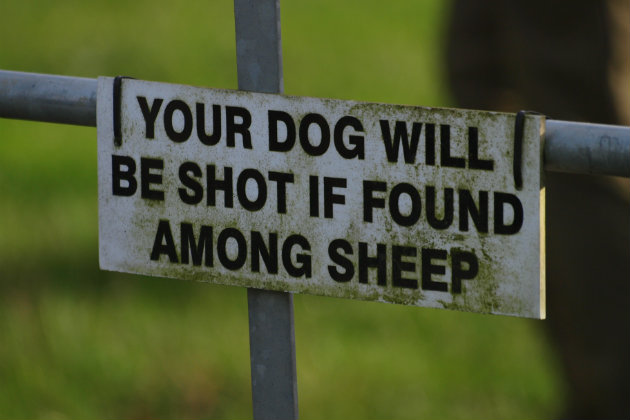
It’s not just the sheep that should be worried
Aversion training
The old-fashioned advice of putting off a dog chasing sheep is to introduce the dog to a ewe with lambs at foot, which is what I did with a springer that showed signs of being an enthusiastic sheep chaser.
I knocked on the door of a local farmer who had a flock of sheep and explained my problem. I was extremely fortunate because the farmer was a keen shooting man who understood my problem and was more than happy to help. The next day I took my spaniel along to the farm and put her in a straw-filled loose box together with a large ewe and two lambs.
The whole episode was carefully managed so there was no risk to either dog or sheep. The ewe took one look at the spaniel, stamped her feet and advanced. The spaniel retreated — the ewe was much bigger than her — and that was the end of it. My dog never looked at a sheep again, let alone showed any intention to chase.
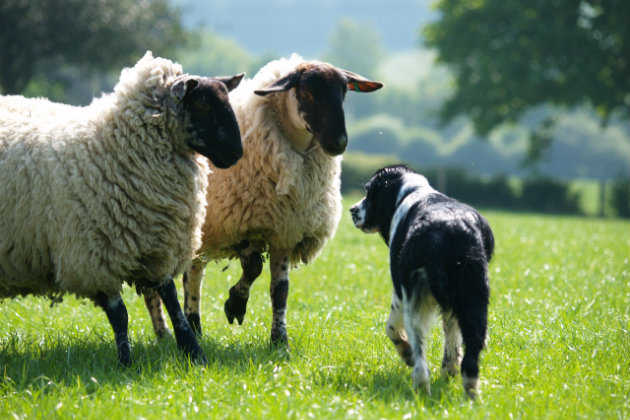
Even if your dog is 100% sheep-proof, take care when working it near them
Don’t get complacent
Some years later I walked another young spaniel of mine every morning through a neighbour’s field of sheep. This particular puppy encountered sheep on nearly every walk so took absolutely no notice of them and the sheep ignored her, too. As a result I thought, with good reason, that she was 100 per cent safe with the creatures but I was wrong. On her initial walk on Exmoor, at the age of 11 months, she chased the first pair of sheep she came across. I didn’t hit her, but she did get the biggest telling off of her life and never so much as looked at another sheep.
The best way of stopping a dog chasing sheep
Why she should have chased the Exmoor sheep but ignored those at home in Kent is a mystery. One theory is that sheep on the hill have a different smell about them. Perhaps it was simply the different environment — a heather-covered hillside rather than a grass pasture — that prompted her behaviour.
- The best way to stop a dog chasing sheep is to introduce the former to the latter under controlled conditions.
- It is best to work with the sheep farmer or shepherd, while I would also advise having the dog on a long lead so that there is no risk to the sheep.
- I would use bribes to keep the dog interested in me, not the sheep. High-value bribes, such as scraps of hot gammon, are more likely to work than boring dog biscuits.
- Practise the exercise as often as possible. Most dogs will soon learn that sheep must be ignored.
- In extreme cases I wouldn’t hesitate to use an electric collar as the ultimate deterrent, especially if there is a risk of the dog having to be put down. Used sensitively, an electric collar is not the dreadful device that many people, including the Kennel Club, would have you believe. They have a range of settings, as well as a buzzer, and by using the buzzer in conjunction with a light shock — test on your own wrist first — most dogs will be cured instantly. The magic of the collar is that it can be used as the dog commits, or attempts to commit, the crime.
- Never forget that sheep worrying is just that and the mere presence of the best-trained dog in the world can get sheep worried. Even if your dog is 100 per cent sheep-proof, always be careful when working it near them.
Why dogs chase sheep
There does seem to be something about sheep that lights the blue touch paper for some dogs, Sheep seem to send a buzz to some dogs that triggers the ultimate temptation to chase. But there are dogs that stop at sheep chasing and others, given the opportunity, who would be sheep killers. Sheep chasers – for the most part – are content to get their kicks from the fun of the chase.
Can a farmer shoot a dog chasing sheep?
Contrary to popular belief, a farmer does not have a legal right to shoot a dog that is worrying their livestock – what they have is a legal defence. Shooting a dog must be a last resort. Dogs are classed as property so shooting a dog could trigger criminal damage proceedings and the farmer will have to prove he had a ‘lawful excuse’.
What about other livestock – cattle or pigs?
Cattle are a rather different proposition to sheep, as they have the ability to trample both you and your dog if they really want to. Every year there are tragic reports of dog walkers who have been killed by cattle, though often the dog escapes. Cattle, especially youngstock, are curious animals and the sight of a dog will often draw them to take a closer look. Danger arises when a herd crowds around you, with the animals at the back pushing those at the front. I’ve only experienced this a few times and I’ve stood my ground and waved my arms with great effect, but always be prepared to let go of your dog to make its own escape.
Beef cows are generally docile, and mature cows are seldom a worry unless they have calves, when they can be dangerous. Beef bulls are generally amiable animals, especially if cows accompany them, but there is always the exception to the general rule, so be sensible. It is herds of young heifers or bullocks that are to be avoided, as they are the most excitable and the most inquisitive, and thus the most dangerous.
Free-range pigs are another matter altogether. I have picked-up among outdoor pigs, and my dogs have always regarded them warily, but I have never had any difficulties. When picking-up, the challenge is usually to gather any fallen birds before the pigs can get to them, as a mature sow or boar will make short work of a partridge or even a pheasant.
Unlike sheep, pigs aren’t tempting for a dog to chase, and you are more likely to have a pig chase your dog than the other way round. Pigs are both powerful and intelligent, so treat them with respect. I’ve yet to have any encounters with exotic livestock, such as alpacas and ostriches, but my research suggests that dogs and alpacas tend to get along with each other pretty well, though they are wary of dogs they don’t know.
Ostriches are birds with small brains and a very powerful kick, so keep away from them at all times.
What about a dog chasing pheasants?
If a dog is breaks into a pheasant pen and attacks the poults the keeper can make a civil claim against the dog’s owner, with the defence that property was being protected. However if a dog chases pheasants when they are outside the pen, in woodland or fields, they are considered to be wild birds and are no longer the keeper’s property.
This article was originally published in 2018 and has been updated.
Related Articles
Get the latest news delivered direct to your door
Subscribe to Shooting Times & Country
Discover the ultimate companion for field sports enthusiasts with Shooting Times & Country Magazine, the UK’s leading weekly publication that has been at the forefront of shooting culture since 1882. Subscribers gain access to expert tips, comprehensive gear reviews, seasonal advice and a vibrant community of like-minded shooters.
Save on shop price when you subscribe with weekly issues featuring in-depth articles on gundog training, exclusive member offers and access to the digital back issue library. A Shooting Times & Country subscription is more than a magazine, don’t just read about the countryside; immerse yourself in its most authoritative and engaging publication.



